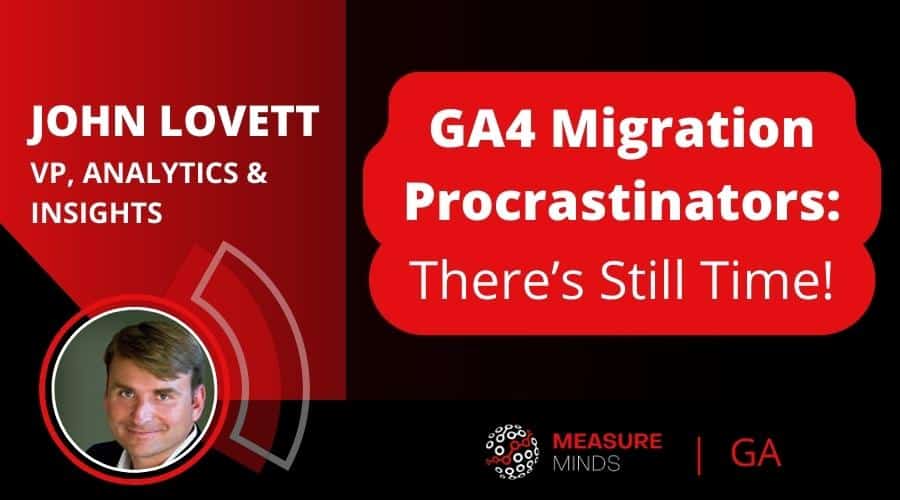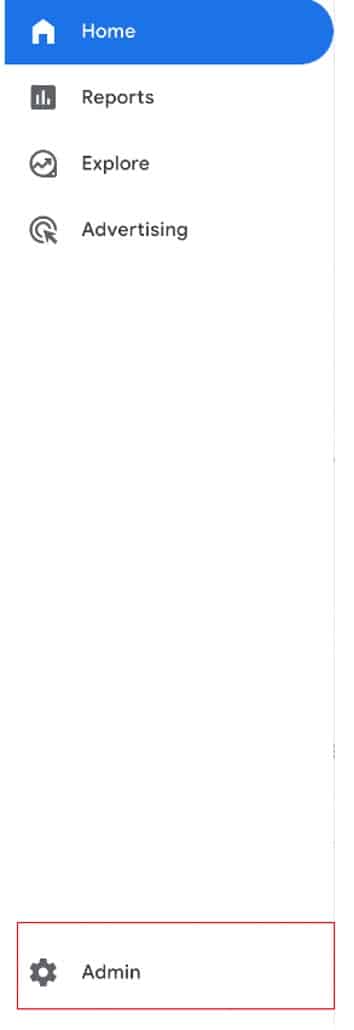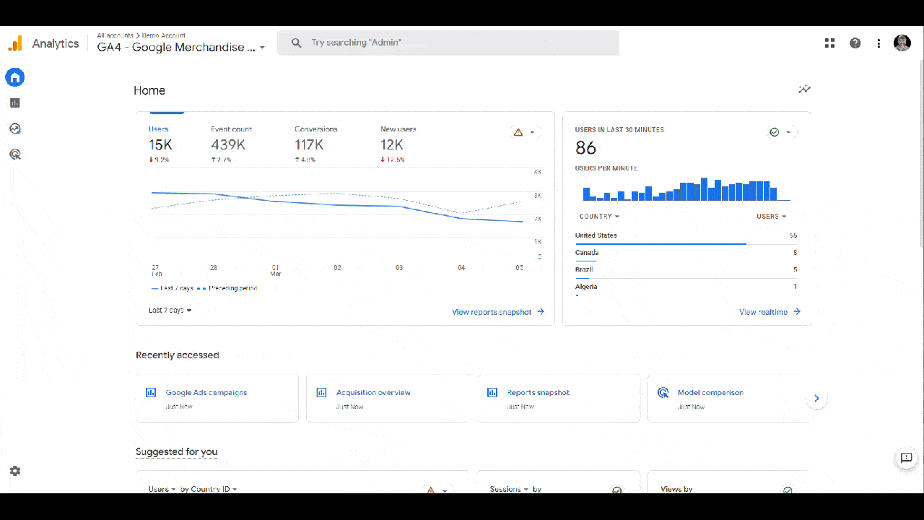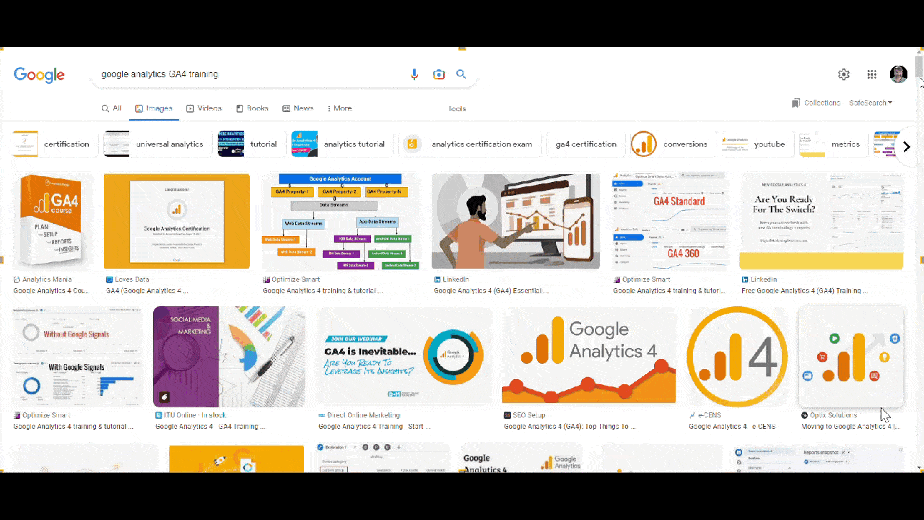
GA4 Migration Procrastinators: There’s Still Time!
The UA to GA4 migration is happening whether you like it or not. This article will share tips on how to deal with it.
This is a write-up of the talk given by John Lovett at GA4ward MKII. You can find his slides here, and the recording is below too:
GA4 Migration Procrastinators: There’s Still Time!

Procrastination. Most of us are guilty of it. We’ll put things off until the last minute while doing something unproductive. Unfortunately, many of us are guilty of procrastination when it comes to GA4 migration. But don’t worry, procrastinators! There’s still a little bit more time to migrate.
Today, we’ll talk you through our migration action shortlist and help you successfully set up GA4. We’ll cover the following actions.
- Key dates & deadlines (and what you may have messed up already).
- Building a GA4 measurement strategy.
- Migration steps and helpful community resources.
- Connecting Google Ads to your GA4 properties.
- Teaching Your Teammates GA4.
Key dates and deadlines
As you probably know, we’ve got some dates looming ahead of us. If you’re using the free version of Universal Analytics (UA), your data collection will stop on July 1st.
What the deprecation of UA means for you today

Let’s walk you through the timeline. Google announced that auto migrations would begin on March 1st, 2023. All of us waited with bated breath to see what would happen. Well, March 1st has passed, and there haven’t yet been any auto migrations.
We can still expect that migrations will come, and probably in different tranches. Firstly properties, then conversions, audiences, and perhaps even Google Ads linking. So, whilst auto migration hasn’t happened yet, it’s probably coming soon.
One of the most important aspects of GA4 migration will be exporting UA data. Seer Interactive has created a deadline of November 1st for doing this. Why? It’s highly likely that on January 1st, 2024, you will have no access to your UA accounts. Even if you’re using a GA360 account, you may still want to start the export process.
The final date to be aware of is July 1st, 2024. That’s when UA360 data collection stops. Paid users will get a little longer to migrate their data and access their accounts. But expect minimal support and performance degradation as UA will likely not be supported.
GA4 auto-migration warnings
In preparation for the GA4 auto-migration there are several things that we are anticipating.
- Account clutter – If you didn’t use the GA4 account setup, you were likely to have duplicate accounts.
- Missing data – If you had your goals set up, you’re probably expecting to see things like conversions and dollars in your new GA4 account. Sadly, it’s highly likely that these will not have translated well with auto-migration.
- Inadvertent PII – The collection personally identifiable information is a definite no-no. The most common issue would be carrying over the information in the URL query string.
Building a GA4 measurement strategy

The goal of your measurement strategy isn’t simply to scratch the surface. You need to ask ‘what’s underneath the iceberg?’. By doing so, you can outline an understanding of your business. This can be shared with your stakeholders to make sure that they understand the plan. You can then talk through important aspects of your project and ensure everyone is on the same page.
Having a clear measurement strategy is the first step to migration. Rather than scratching the surface, you’re asking:
- Who is my audience?
- What are their problems?
- How can they use GA4 data to answer their business questions?
Measurement Strategies are almost always an iterative process. What this means is you set the strategy with the best intentions, but things change. You should view it as a dynamic, ongoing effort.
This isn’t a ‘set it and forgets it’ objective. It’s a way to put out your plan and get everyone on board with what you’re doing. You can then evolve from there.
Let’s talk about some of the ways that we can do this.
Know your business, get your data
Priorities & Strategies

There are a couple of steps involved in knowing your business. The first is to think about your priorities. Let’s imagine you have data that you want to use to benchmark site performance. How can you get data that will show the foundational tracking of page performance?
Or, maybe your priority is to have a clear view of your marketing attribution and audience activation. In that case, ensure that you have the tools and the information that you need to look at attribution.

Knowing your priorities is a key way of getting to your objectives. We talk about this in the context of OKRs (objectives, key results). The document above is used for planning. It can help us to ask questions like
- What is our key objective?
- What strategies will we use to meet them?
- What do our tactics look like?
Again, this is a great way of getting people on the same page. You can look through the details, and explain the process that you use to get through the implementation.
Getting your data

There are lots of ways to get your data. The above image shows how we customize for our clients. You should customize it for yourself. When planning, try to think about some of the following areas:
- Make sure to establish foundational events.
- Think about your individual and rollout properties. This is particularly a big deal for UA360 customers. How you establish and set up your properties will have cost implications.
- Think about how you will carry out cross-domain tracking (if needed).
Estimate the lift
This is not like any other Google update from the past 15 years. It will require a substantial amount of effort. You will need to estimate the lift. In other words, think about the time that it will take and the resources required.
Have a plan
It is critical that you create a plan before you start any implementation. Think about what you want to pack before you move. Think of this in the context house. When moving, you’ll probably pack lots of baggage that you don’t actually need anymore. During GA4 migration, try to only carry across what you need.
Identify and commit your resources
In most cases, one person will not be able to complete the migration alone. Skills required include:
- Analytics Tech
- Developer
- QA Team
- Report rebuilders
- Trainer
Update the default settings
This is crucial and often overlooked. One of the biggest traps is the data retention setting. Without updating this, user-level data including conversions will be deleted after two months.
Measurement do’s
Let’s take a moment to review what we’ve talking about.
- Estimate the lift – Make sure that you know the amount of time and resources needed.
- Have a plan – Use your plan as a means to check in with your stakeholders. Make sure you’re getting the data they need to answer their business questions.
- Identify and commit resources – Think about who you’ve got on your team. Who will carry out the implementation?
- Update the default settings – Don’t lose data due to laziness.
Migration steps & helpful community resources

Let’s look at the different steps involved in Seer’s approach to migration.
- Talking about our measurement strategy. Your plan should be customized for your business and help to get alignment with stakeholders.
- Setting up key integrations. Make connections to key tools such as BigQuery, Search Console, and Google Ads.
- Onboarding and team training. How do you teach people to use GA4? You’ll need to help your team get up to speed with some of the differences in GA4.
- Create documentation. Documentation is becoming increasingly important. Make sure that your team has the resources they need.
What not to do with your GA4 migration
Here are three things you shouldn’t do with your GA4 migration.
- Auto-migrate – We’ve already talked about the downsides of this. Don’t allow Google to move for you. It’s important you carry out migration yourself.
- Lift and shift – You probably have broken tabs in Universal Analytics. Don’t carry these issues over to GA4.
- Duplicate events – Duplicate events can cause lots of problems. To avoid the problem, make sure you’re not using the category action label schema. Instead, use the new event schema.
Seven Steps to a Successful GA4 Migration
We’ve narrowed the migration process down to seven steps. These are detailed below.
- Develop a GA4 Measurement Strategy. Use this as your opportunity to document what you’re doing and why.
- Create new GA4 account properties (don’t auto-migrate)
- Establish your Measurement Implementation Plan (MIP): Conversions, Events, Metrics & Dimensions. How can you establish all these different things?
- Set up key integrations (Search Console, Google Ads, Audiences, etc).
- Document/Update/Verify your MIP. This step is critical. Things will likely change from your strategy when you get into the depths of implementation.
- Onboarding & Training for your teammates (we’ll discuss this more later).
- Export your UA historical data.
Connecting Google Ads to your GA4 properties
Luckily this process isn’t too difficult. Let’s go through each of the steps.
Step 1

From your GA4 property, head to the admin screen. You can access this by choosing the cog symbol at the bottom left of your screen.
Step 2

From the admin section, scroll down until you find the option labeled ‘Google Ads Links’. From
Step 3

This will open up a new page. This time, choose ‘Link’ from the top right of your screen (you will need to edit your access settings before doing this).
Step 4

You should now be brought to a page similar to that shown in the image above. From here, you’ll find all your related Google Ads properties. Simply click the option that you would like to activate. Then hit the ‘Confirm’ button in the top right corner.

In the next step, it’s time to make some decisions. The first is whether you want to allow personalized advertising.

The second decision surrounds auto-tagging. By clicking the drop-down menu, you’ll be given two options. It’s usually best to choose the ‘Enable auto tagging’ option. This enables a lot of the information that you need to be ported over from Google Ads to your GA4 property instance. Once ready, choose ‘Next’ from the bottom of the page.
And there you have it! You should now be taken to a screen to notify you that your account is linked. This process shouldn’t take much longer than three minutes.
What do you get from linking GA4 to Google Ads?
There are a number of reporting capabilities that are built into GA4. Once you’ve linked GA4 to your Google Ads account you can:
- Use Standard GA4 Reports
- View data in Explore
- View in Google Data Studio
Google Ads Exploration

When carrying out our exploration report and selecting metrics, we searched for Google Ads. As you can see from the image above, this brought up a list of relevant metrics.

Explorations will give you the basic information that you need. This includes:
- Impressions.
- Clicks.
- Cost.
- Cost Per Click.
You can also add conversion events to your exploration reporting. This will give you lots of extra information about key interactions related to your advertising.
An important note: Data may take up to 48 hours to appear.
Google Ads standard report

When you go to Acquisitions>Overview there will be a card towards the bottom of the page. This shows you where your Google Ads data is. By opening this card up, you gain more information. This includes
- The parameters for your different Ads accounts.
- Users.
- Sessions.
- Engaged sessions.
- Google Ads clicks.
- Google Ads cost
- Google Ads cost per click
- Conversion events.
Let’s review
We’ll quickly recap the steps listed above.
- Follow the four steps to link your accounts.
- View data in Explore.
- View data in Standard Reports.
- Import Conversions & Audiences *
*If you’re a large advertiser with lots of different conversions and audiences, this can be a big task. We have some methods to make this process smoother. Why not get in touch?
Teaching your teammates GA4

Here’s the good news. GA4 training is plentiful. There are lots of different guides out there to help you get to grips with the tool. Many of these resources are free. It’s worth taking a look more closely at what’s out there (why not start with the MeasureMinds blog?).
The fact of the matter is that GA4 migration requires you to rethink Analytics. The data model behind GA4 is completely different from UA. Instead of a session-based model, GA4 is based on events and parameters. Everything in GA4 is an event. Relearning is part of the process of training your teammates.
What are the biggest differences in GA4?
- Account Structure
- Views in GA4 are no longer available.
- Overhaul of default reports and UI structure
- Default reports are grouped by ROI-centric vs User-centric.
- There is more emphasis on creating custom reports and explorations directly in GA4 and saving them for later.
- Event-based model
- Instead of a session-based model, GA4 tracks everything as events, including goals.
- All events in GA4 have parameters to help define them, instead of the hierarchical taxonomy of category, action, and label.
- Sampling
- All default reports available in GA4 are always unsampled, even when applying comparisons and custom parameters to your report.
Reports training overview
Below are some of the topics that you might want to cover in your training.
Out-of-the-box reports
- A high-level review of the different reports included in every GA4 property.
- What’s available in each report and how to access it?
- In-depth look at each report type.
Editing existing reports
- How to alter existing reports.
- How to easily access the information you frequently view.
Creating custom reports from scratch
- How to create a net new report for your GA4 property.
- Managing reports and collections.
Managing reports and collections
- Using the Library section of GA4 reports.
- Modifying existing collections and creating new ones.
Attribution models in GA4 vs UA

One of the neat things that you’ll probably notice after GA4 migration is its attribution modeling. As seen above, Universal Analytics had this feature, but in GA4 it’s much more in-depth.
Lifecycle Reports Overview
Another important topic to cover is lifecycle reporting. These can be broken into four different areas.
Acquisition
- Identify the top channel performers.
- Identify which channels are performing poorly and which landing pages are doing poorly within those channels.
- Evaluate paid campaigns.
Engagement
- Review event performance.
- Review conversion performance.
- Find pageviews for specific pages.
Monetization
- See how the site is doing from a revenue standpoint.
- Review engagement rates of specific products at different points in the purchasing funnel.
- Assess specific products by revenue.
Retention
- Come here for a comparison of engagement between new and returning users.
Provide Hands-On Training to Reinforce Concepts

Not only is it a good idea to teach your employees, but also to have them take part! Work them through the process of creating a new report. Next, allow them to add dimensions and metrics to be able to get through. Finally, talk them through their report.
When users create their own reports, they’re more likely to use them. They have a vested interest in seeing metrics change and using them to understand their business.
Tips for Building a GA4 Training Curriculum

#1 Assess your audience
When planning your curriculum, really try to understand your audience. You may have stakeholders who are logging into GA4 for the first time. Or, perhaps your leadership team wants to use GA4 to understand business performance. Build your training for different audiences. Beginner audiences need different training than advanced audiences.
#2 Choose your learning platform
There are lots of learning platforms to choose from. Choose one and make sure you stick with it.
#3 Provide reinforcement lessons
What can you do to reinforce learning?
#4 Incentivize learning
Think of ways to make learning more attractive to your teams.

Instead of dumping a lof learning onto your teammates, try to use a module-based approach. The image above shows some example modules that you might cover.
Let’s review
When teaching GA4 to your teammates, remember to:
- Plan your curriculum.
- Know your audiences.
- Use a module-based approach.
- Utilize community & resources.
Procrastinators beware!
The clock is ticking, BUT there is still time. Act now, there’s still time for GA4 migration, but you do need a plan.
Further Reading
Want more? Check out our blog for tips on Google Analytics, GTM, and a whole host of other Google packages.
About John Lovett
John Lovett is passionate about using analytics to put a stop to lousy marketing. Throughout his career, John has consulted with companies on how to use data and measurement strategies to understand customers, to reach them in the moments that matter, and ultimately to deliver better marketing. As the VP of Analytics & Insights of Seer Interactive, he draws on his years of experience as a consultant, author, and past President of the Digital Analytics Association to guide his team and clients toward analytics excellence. You can likely find John on a boat or in a hockey rink with his wife and three boys when he’s not working.

- How to Blend GA4 & UA Data Using BigQuery & Looker Studio - 12/07/2024
- How to do a Google Analytics 4 Audit & Mistakes to Avoid - 10/07/2024
- How to Backup & Visualize GA3 Data for Free - 27/06/2024